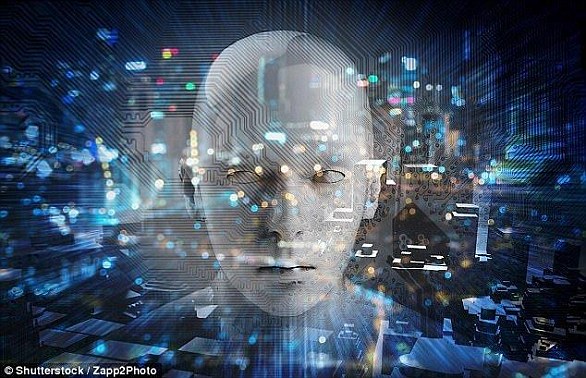The Real Flubber? Blob of Jelly Can Play Pong Thanks to Basic Memory, Bizarre Study Reveals
In the 1997 film Flubber starring Robin Williams, an absent-minded professor creates a sentient slimeball with incredible abilities.
Now, more than 25 years later, scientists have made a surprising discovery that makes Flubber possible in the real world.
Researchers from the University of Reading have created a lifeless ‘hydrogel brain’ that can play the video game Pong.
By connecting a plate with electrodes to the classic game, the water-based jelly managed to improve performance by as much as 10 percent during practice.
While it may not be as resilient as Robin Williams’ invention, researchers believe this breakthrough could change the future of artificial intelligence.
The researchers were inspired by an earlier experiment that showed that a plate of brain cells could play Pong when connected to electrodes.
These experiments suggest that ‘something resembling intelligence’ can be made from very simple systems.
To take this idea one step further, the researchers investigated whether non-living jellyfish could also learn to play the game.
To test the gel’s gaming performance, the researchers paired an “ionic hydrogel” with a single-player version of Pong, which required the player to bounce a ball against a solid wall for as long as possible.
Surprisingly, the hydrogel developed a kind of ‘memory’ that allowed performance to improve over time.
Researchers have come one step closer to creating real flubber, now that they have designed a jelly that can play the game video game pong
After some practice, it turned out that the jelly became 10 percent better at the game and could sustain longer rallies.
Lead researcher Dr Vincent Strong from the University of Leeds said: ‘We’ve shown that hydrogels can not only play, but over time they can actually get better at it.’
However, the researchers do not claim that the jellyfish is conscious or that it necessarily ‘learns’ how to play.
Hydrogels, such as gelatin and agar, are complex chains of polymers that become jelly-like when you add water.
The only difference between the jelly in this experiment and the one in your kitchen is that the researchers used an “electroactive polymer.”

Ionic hydrogels (pictured) like those used by the researchers can develop a form of ‘memory’ by shifting in response to electrical stimulation
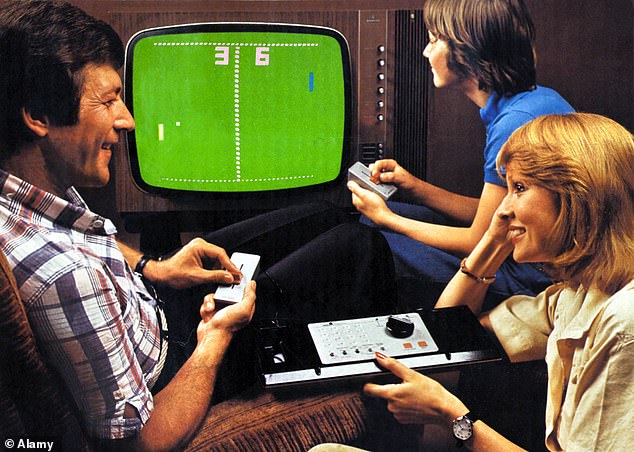
The researchers found that a hydrogel could learn to play the classic game of Pong (pictured) and even improve by 10 percent with practice
These polymers form a gel that can respond to electrical stimulation due to the presence of charged particles, or ions, trapped within the structure.
The type of ‘memory’ the hydrogel exhibits depends entirely on where the floating ions end up.
To make the jelly play Pong, it was first placed between two plates. On each plate were three by three small electrodes.
Six of these electrode pairs, which together form a three-by-two grid, were charged to simulate the movement of the ball across the screen.
The remaining three pairs were then used to represent the back wall towards which the player moves his paddle.
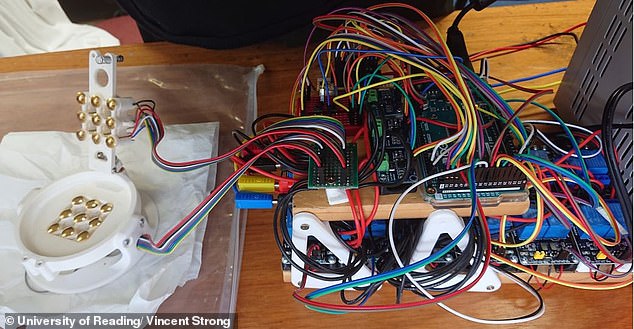
The researchers placed the jelly in a grid of electrodes (left in the photo), allowing the jelly to simulate the movement of the paddle and ball through electrical stimulation
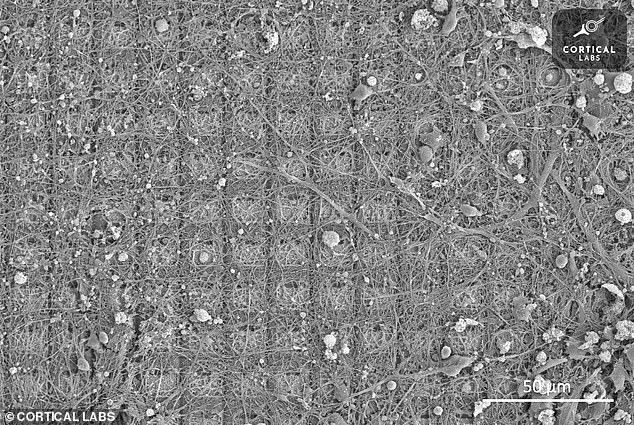
The researchers were inspired by an earlier study that showed that a plate of mouse neurons (pictured) in what they called a “DishBrain” could learn to play Pong
Using these six electrodes, the ions in the hydrogel were measured where they were most concentrated and the paddle was moved to that location.
When the hydrogel is stimulated, the charged ions move and pull water molecules with them, changing the shape of the jelly.
As the ions moved, the point of highest current on the back wall shifted as the ball moved across the screen, allowing the jelly to change the position of the paddle.
Initially, all the ions are evenly distributed throughout the gel, causing the paddle to move somewhat randomly.
But as the ball moved down the field and more current was added, the ions shifted and accumulated in the areas where the ball frequently went.
Dr. Strong explains, “Over time, as the ball moves, the gel accumulates a memory of all the movements. And then the paddle moves to accommodate that ball within the simulated environment.
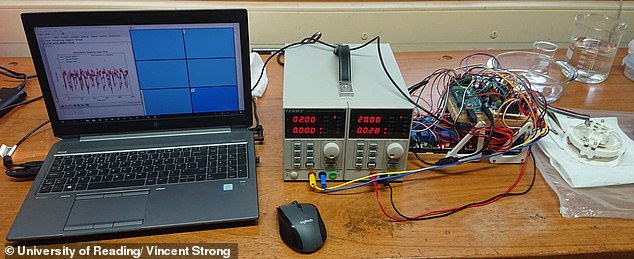
The hydrogel ‘learned’ to play thanks to the movement of charged particles that accumulated in areas where the ball was simulated most often. In this experiment (pictured), the jelly reached its peak performance after 20 minutes of practice
“The ions move in a way that maps a memory of all the motion over time, and this ‘memory’ results in improved performance.”
This memory allows the gel to move the bat toward the ball more often, making rallies last longer.
The researchers claim that this basic form of memory is actually very similar to what happened in previous experiments with brain cells.
Co-author Dr Yoshikatsu Hayashi, also from the University of Reading, says the basic principle is the same.
In both hydrogels and neurons, charged ions move in a distribution that matches the motion loops in the simulated world of Pong.
Dr. Hayashi says, “In neurons, ions flow within the cells; in the gel, they flow out.”
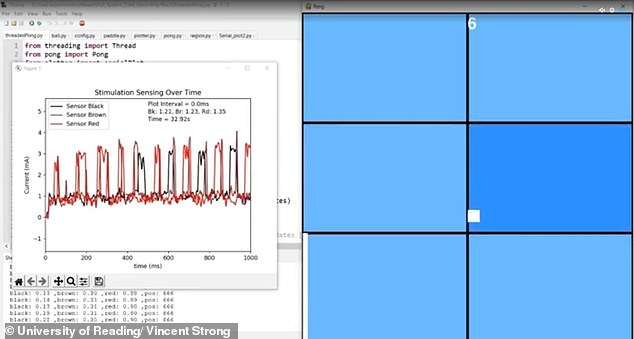
In addition to learning to play a simple game like Pong, the researchers hope to extract the algorithms that enable the hydrogel to acquire memories, providing a new, simple basis for artificial intelligence.
The main difference between the two is that the hydrogel learns more slowly: it takes 20 minutes to reach peak performance, while the brain cells take 10 minutes.
The researchers believe that this could lead to a new kind of ‘intelligence’ in the future, which could form the basis for new AI.
Currently, most AIs are based on the arrangement of neurons in the brain, hence the name ‘neural networks’.
However, the kind of memory that a hydrogel exhibits could provide a simpler basis for intelligent algorithms.
The researchers say their next goal is to extract algorithms from the hydrogel that will enable this unique form of memory.

